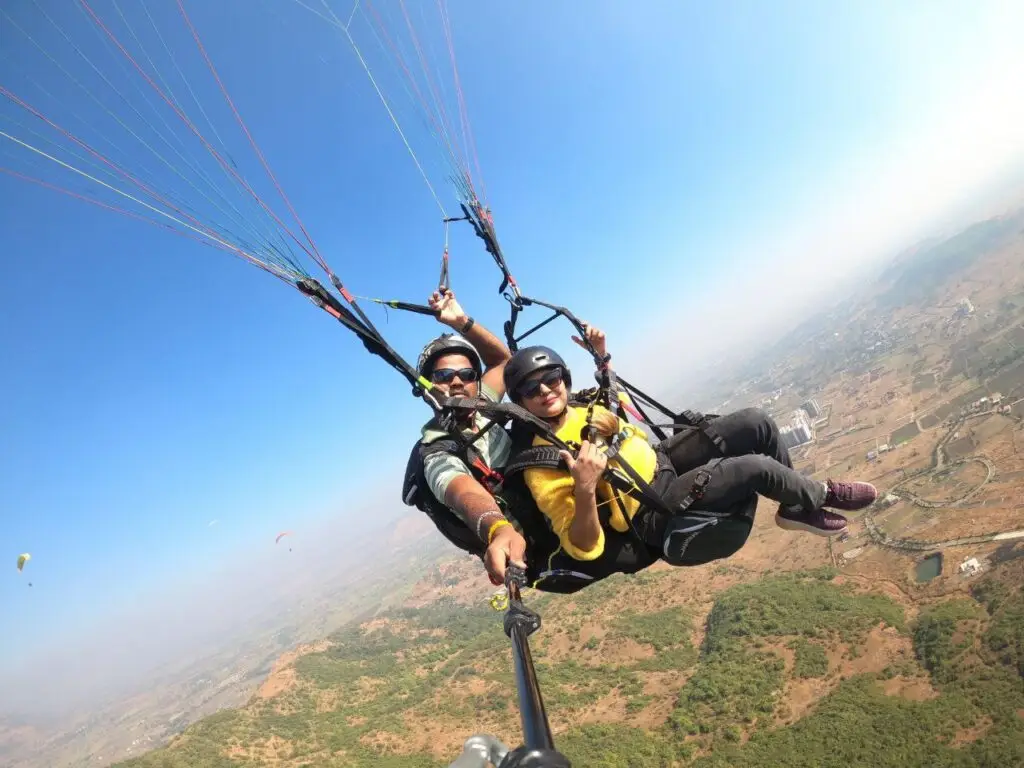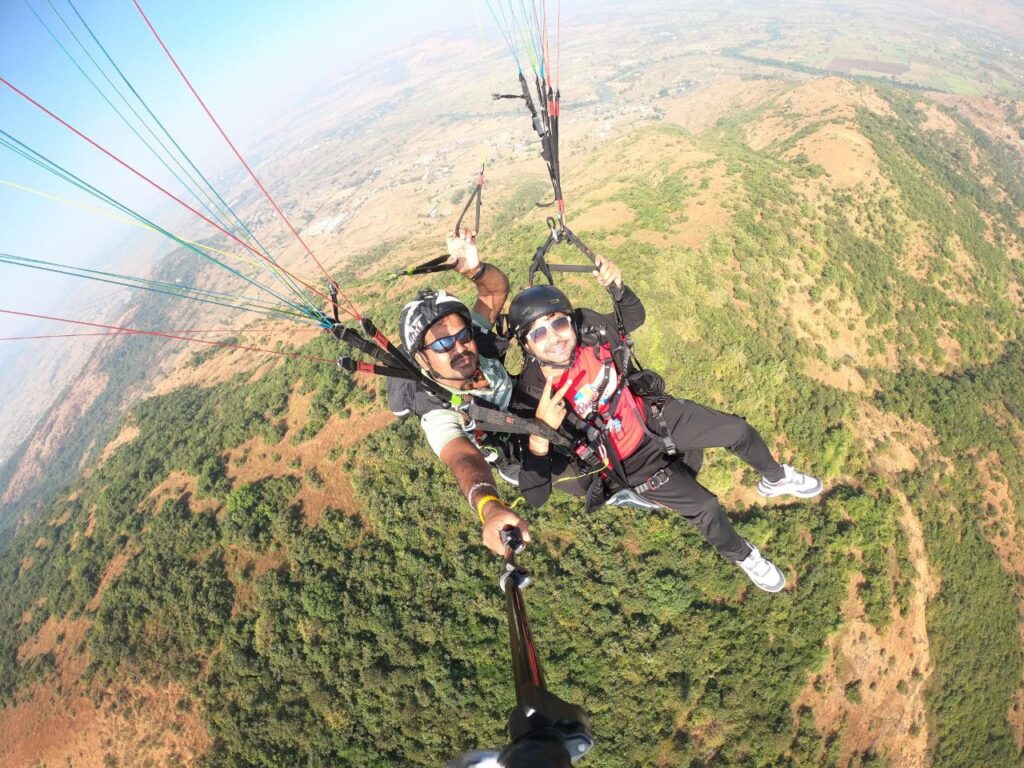
How Does Paragliding at kamshet Feel?
Paragliding at kamshet is an exhilarating experience that feels like a blend of thrill, freedom, and sheer amazement. As you take off from the hill, you might feel a rush of adrenaline, followed by a sense of calm as you glide smoothly through the air. The scenic beauty of Kamshet unfolds beneath you, with its lush green hills, serene lakes, and picturesque villages creating a stunning panorama.
The cool breeze against your face and the birds-eye view of the landscape give you a unique perspective and a sense of connection with nature. It’s a fantastic escape from the hustle and bustle, offering moments of tranquility and awe-inspiring vistas. Whether you’re a seasoned paraglider or a first-timer, Kamshet promises an unforgettable adventure in the skies. 🪂🌄
Have you ever tried paragliding before, or are you planning to?
Contrary to what most people may think, paragliding is frequently a gentler, tranquil experience. When you think of paragliding, you might image yourself leaping off a cliff head-first and experiencing the same stomach-churning sensation you get on a rollercoaster as you descend to the ground. In contrast to falling, paragliding actually gives you the sensation of floating easily through the air.
Let’s examine each phase of the procedure in greater detail to better understand how you experience Paragliding at kamshet:
Take off.
You will be standing on a mountain or hill, looking forward, with your pilot and paraglider following you. You’ll feel a tug on your harness as the pilot inflates the paraglider, and you might need to take one or two steps rearward. The captain will then command the paraglider and give you the go-ahead to advance. You’ll feel your strap being pulled upward as the paraglider takes off. Keep your legs lowered until you are standing entirely off the ground.
Flight.
The pilot will direct you to recline in your harness once you are airborne so you can become more relaxed. The joy of flying follows. Nothing else compares to it. You may find it unsettling to feel the air surge over your face because you are suspended in the air while lounging in a comfortable chair. The pilot will then probably ask you if you want to experience some higher-adrenaline maneuvers or perhaps if you want to assume the controls for yourself. This be subject to the pilot and weather conditions.
Landing.
Your pilot will alert you to prepare for landing as you approach the earth. You may be instructed to keep your knees down as you approach land or to keep them down and get ready to take off again, depending on the pilot and the weather. You won’t impact with a thud, so don’t be concerned about it. A paraglider landing feels like stepping down significantly. You can read more about the essential tips for Kamshet Paragliding.
bluesky paragliding at kamshet

